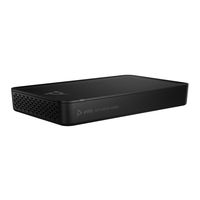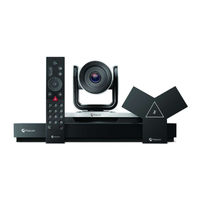Poly Studio X70 Manuals
Manuals and User Guides for Poly Studio X70. We have 9 Poly Studio X70 manuals available for free PDF download: Administrator's Manual, User Manual
Poly Studio X70 Administrator's Manual (163 pages)
Brand: Poly
|
Category: Conference System
|
Size: 2 MB
Table of Contents
Advertisement
Poly Studio X70 Administrator's Manual (156 pages)
Brand: Poly
|
Category: Conference System
|
Size: 2 MB
Table of Contents
Poly Studio X70 Administrator's Manual (137 pages)
Brand: Poly
|
Category: Conference System
|
Size: 2 MB
Table of Contents
Advertisement
Poly Studio X70 User Manual (58 pages)
Video Mode
Brand: Poly
|
Category: Conference System
|
Size: 1 MB
Table of Contents
Poly Studio X70 User Manual (39 pages)
Video Mode
Brand: Poly
|
Category: Conference System
|
Size: 0 MB
Table of Contents
Poly Studio X70 User Manual (37 pages)
Brand: Poly
|
Category: Conference System
|
Size: 0 MB
Table of Contents
Poly Studio X70 User Manual (26 pages)
Brand: Poly
|
Category: Conference System
|
Size: 0 MB
Table of Contents
Poly Studio X70 User Manual (25 pages)
Partner Mode
Brand: Poly
|
Category: Conference System
|
Size: 0 MB
Table of Contents
Poly Studio X70 User Manual (49 pages)
Brand: Poly
|
Category: Conference System
|
Size: 0 MB
Advertisement








